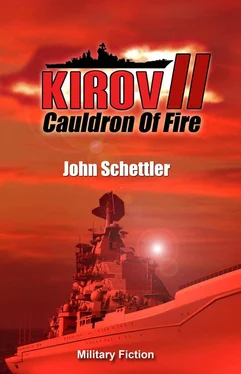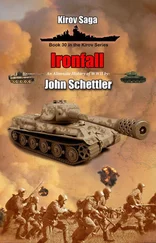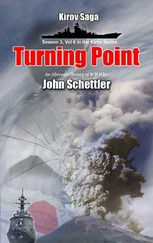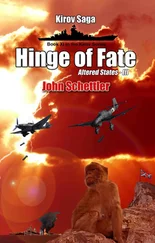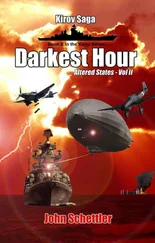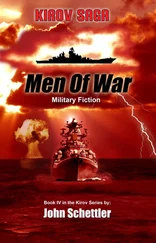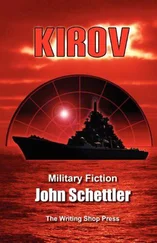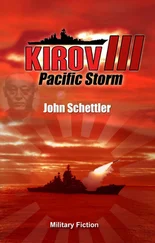After twelve successful missions in those same waters, and a long, distinguished career, HMS Eagle keeled over and sank in a matter of minutes. Thankfully the bulk of her crew was saved and plucked from the sea by nearby destroyers. It was the fifth carrier lost in the war to date by the Royal Navy, and twelve Sea Hurricanes went into the sea with her, the bulk of 801 Squadron and all four planes comprising 813 Squadron were lost. Only four planes in her 801 Squadron survived, as they were already in the air and were able to land on the carrier Indomitable .
The plan, like all plans before it, was beginning to fray right at the outset. It was hoped that the heavy escorts would guarantee a safe passage at least as far as Bizerte, but HMS Eagle was sunk hundreds of miles to the west, due north of Algiers. The suddenness and shock of the attack was an awful harbinger of what was yet to come on this adventure—“Operation Pedestal” as it came to be called. It told the Admirals and Captains that their enemies were well aware of their plans and had assembled a considerable force in opposition. Kesselring boasted that, after recent reinforcements from other theaters, he could fling upwards of 700 planes at the British fleet. Beyond this there were U-Boats and Italian Subs in the Med, and near the islets of Pantelleria and Lampedusa, the Italians also had a hornet’s nest of fast attack torpedo boats to strike at any ships that made it past Cape Bon at the northernmost tip of Tunisia to begin the last desperate run for Malta. In those narrow, mine infested waters, a place where the more powerful British battleships could not go, the small, fast craft were the ideal defenders.
Yet there was one other element the Admiralty had not planned for—could never have planned for, in spite of their harrowing encounter with the same dreadful raider a year ago— Kirov .
Melville-Jacksonstrode through the outer entrance to the flight officer’s room at Takali airfield on Malta, ready for debriefing, and with quite a story to relate. Wing Commander David Cartridge was there along with another pilot out that morning for reconnaissance, George Stanton, and for this occasion Air Vice Marshall Keith Park, chief of the Malta Air Defense effort was also waiting when he entered. Jackson saluted crisply and took his chair.
“Good afternoon gentlemen,” said Park with an amiable smile. “How’s the new radar kit?”
“Well enough, sir,” said Stanton, “A bit limited in range but more than suitable for low level sea search.”
“I must say we had rather a different experience on our flight,” said Melville-Jackson. “I made a visual sighting of my target before we ever got a peep on the radar. Thought my mate was sleeping at first, but he swears his scope was clear until we were right on top of the damn thing.”
“Ah, yes,” said Park. “This big Italian cruiser you reported… Latitude 39.00, Longitude 11.16 from your report. Some two hundred miles east of the Cagliari, on a heading of 225 south by southwest.”
“Yes sir. Came up on it all of a sudden. Odd disturbance in the sea as well. Thought it was a submarine blowing tanks until I saw the disturbance was much too big, and the contact as well. It was definitely a warship, sir, though I must say we haven’t had much of a look at the Italian Navy just yet, so I can’t be more specific other than to say this was at least a cruiser—most likely a heavy cruiser at that.”
Park was a crisp and thorough officer, with a penchant for details and a good understanding of all the new technology that was impacting the war effort, particularly the new radar sets. “Well Jackson, you’ve only arrived yesterday from Coastal Command, and yes I dare say the Italians are not too fond of sailing that far west, but do have a look at ship silhouettes before you fly out again this afternoon. The waters in these regions get fairly busy, and you’ll want to know exactly what you are shooting at next time around.”
For his part, Park knew well what he was talking about when it came to air operations. A New Zealander and First World War flying ace, he soon rose through the ranks to become a commander in the RAF. He was also well versed in naval matters, having gone to sea at the early age of nineteen on a steamship where he earned the nickname “skipper.” He later fought at Gallipoli, and the battle of the Somme where he learned firsthand how valuable good aerial reconnaissance could be to the outcome of any military conflict. In fact, he had flown old Bristol fighter recon planes in the First World War, biplanes then, and had many kills against German fighters for his effort. When the second war came Park was an air vice Marshal taking part in the defense of London with Number 11 Group, RAF. He had fought in the skies over the city, and taken part in the planning and briefing in the Battle of Britain bunker at RAF Uxbridge. After a stint in Egypt, Malta seemed the perfect place to post a man like Park, for it was enduring its own daily struggle with the Luftwaffe and his experience fit hand in glove.
“You say you took gun camera footage of this ship?”
“Yes, sir,” Jackson replied. “Gave them a taste of my cannon as well. Caught them flat footed, it seems. They never fired a shot before I was over them and gone. Yet I thought the better of trying to come round for a second pass after waking them up. A cruiser that size is a job for the full squadron.”
“Indeed,” said Park. “Well, we’ll have a good deal to do over in the Ditch these next few days.” He was referring to the underground cave sites beneath the city of Valletta where the island’s fighter defense was coordinated. “I was going to send you out to hit Comiso on Sicily this afternoon. We need to pound their airfields there as well before things get so hot with this convoy that we’re thrown completely on the defense. But seeing that you’ve jumped on something here, we’ll give that mission to 235 Squadron with the Mark I Beaus. You’ve a couple newer planes in 248 Squadron, and two with these new radar sets. So it looks like your job will be to hunt north for this contact and ascertain her position and intentions. Admiralty indicated that the Italians have their 3rd and 7th Cruiser Divisions operating in the Tyrrhenian Sea, and they will definitely be up to no good insofar as this convoy is concerned.”
“Right enough, sir.” Jackson was game for any sortie they would put his name to, and the four men spent the next several minutes going over the briefing for the Comiso air strike mission for 235 Squadron before the technicians brought in his gun camera footage and began to mount it on the projector.
“These other two gentlemen have had a look or two at Italian cruisers,” said Park. “And I daresay I’ve a fair amount of experience in the matter as well.” They looked at the film with interest and, as the footage ran, Park found himself edging forward, hands clasped behind his back, leaning in slightly to get a better look. The opening frames were clearer, though the range was farther away and the contact seemed shrouded in shadow. When Jackson began firing in earnest the shells sent a wild forest of thin geysers spraying up all around the ship, which was struck amidships near the main superstructure where a fire soon started and began to obscure the images with smoke.
“Can you run that back to the start and hold a few stills?” said Park over his shoulder. “Yes… There now… Have a look at that gentlemen. What do you make of if, Mr. Cartridge?”
The wing commander was quick to reply. “Not an Italian cruiser sir, where are the stacks?” He pointed at the screen. “That tall mainmast area there where most of the fire was concentrated—I don't see a stack. It should be about here on most Italian cruisers, and angled slightly back, with one more smaller stack located aft. That could be this feature here,” he pointed again, “but this main superstructure area is all wrong for an Italian ship in my view—at least for their cruiser designs. And it looks too big, sir.”
Читать дальше
